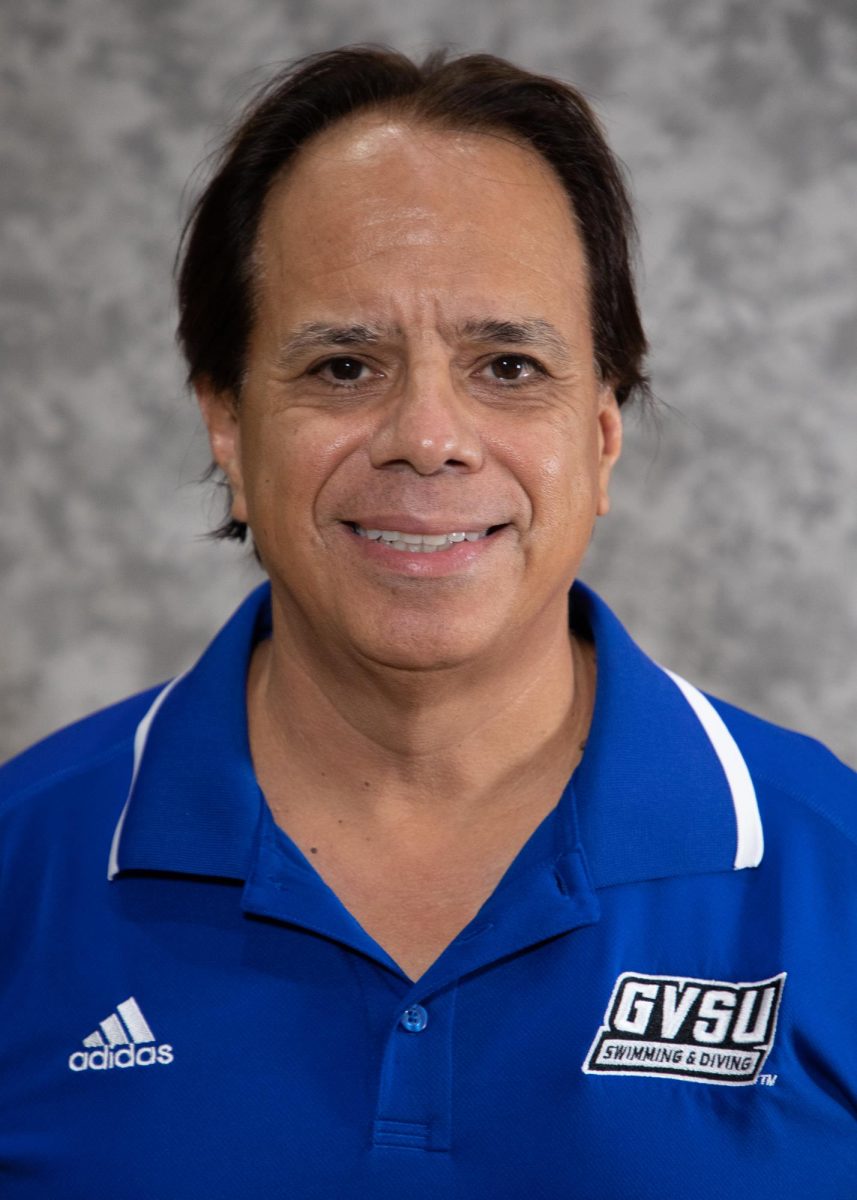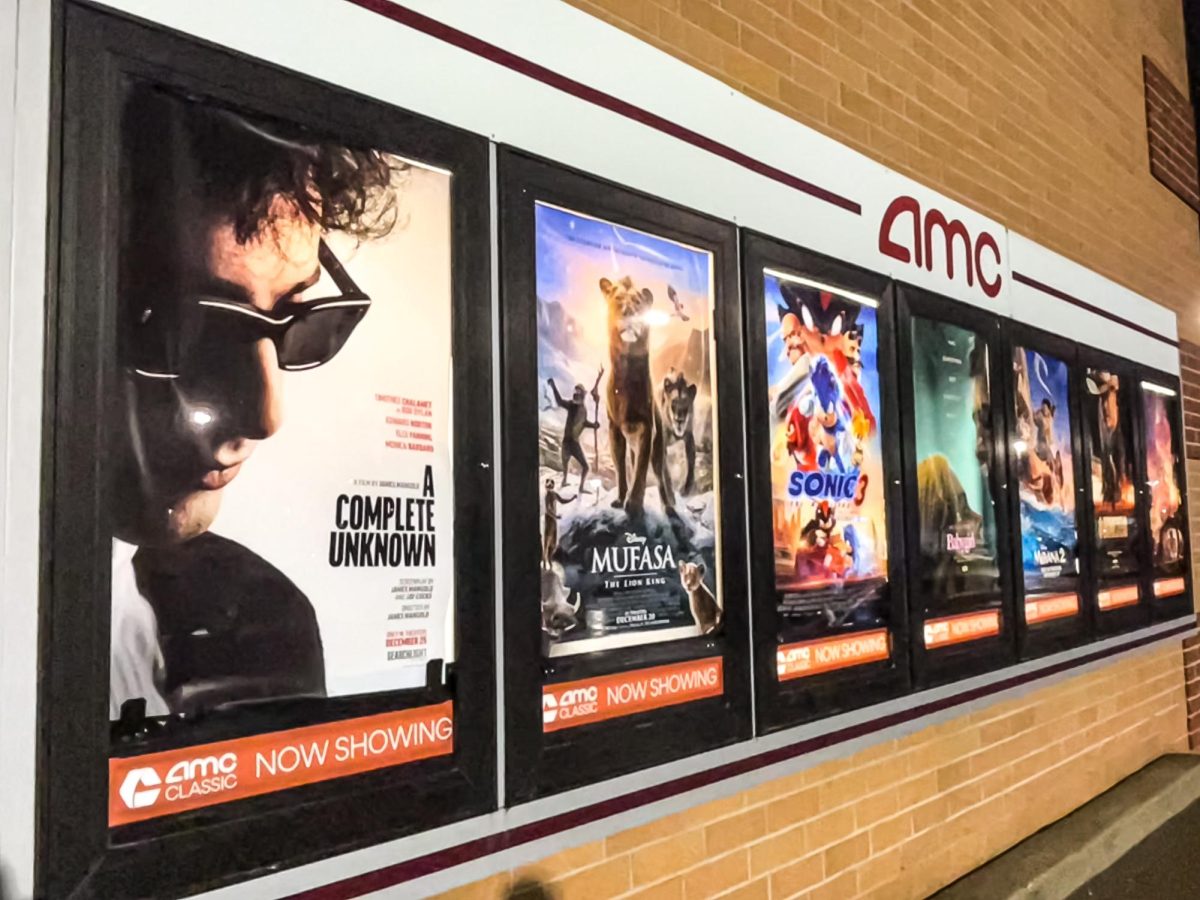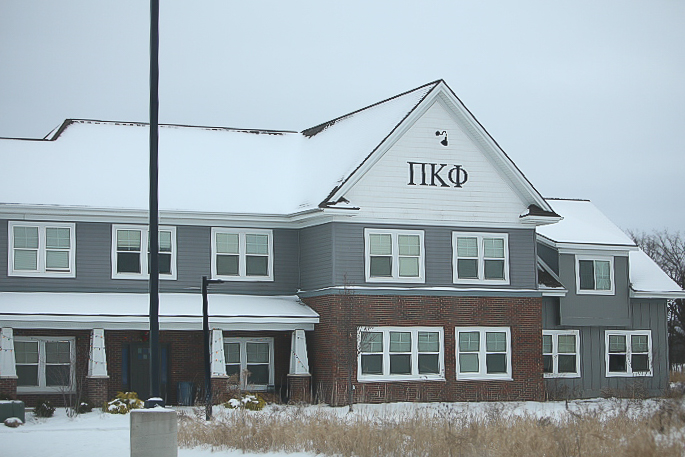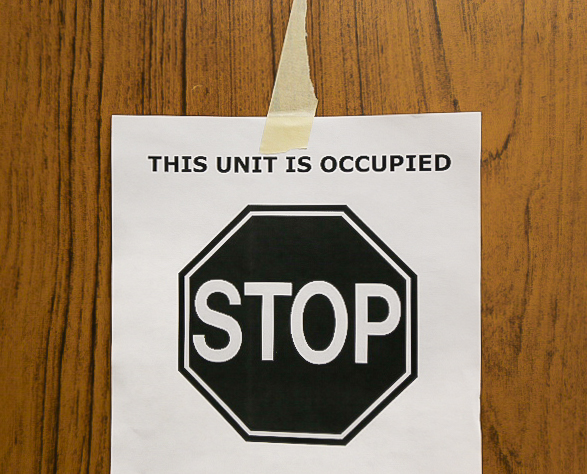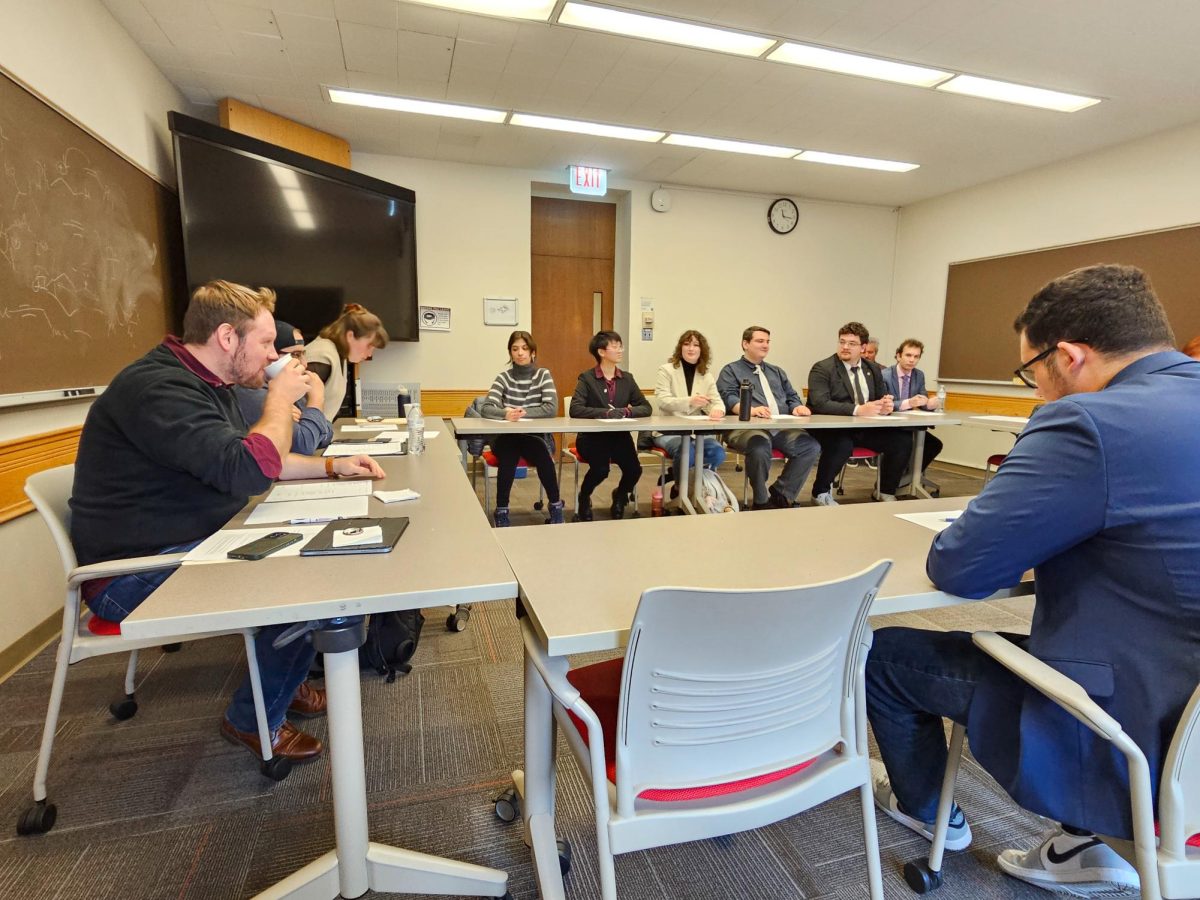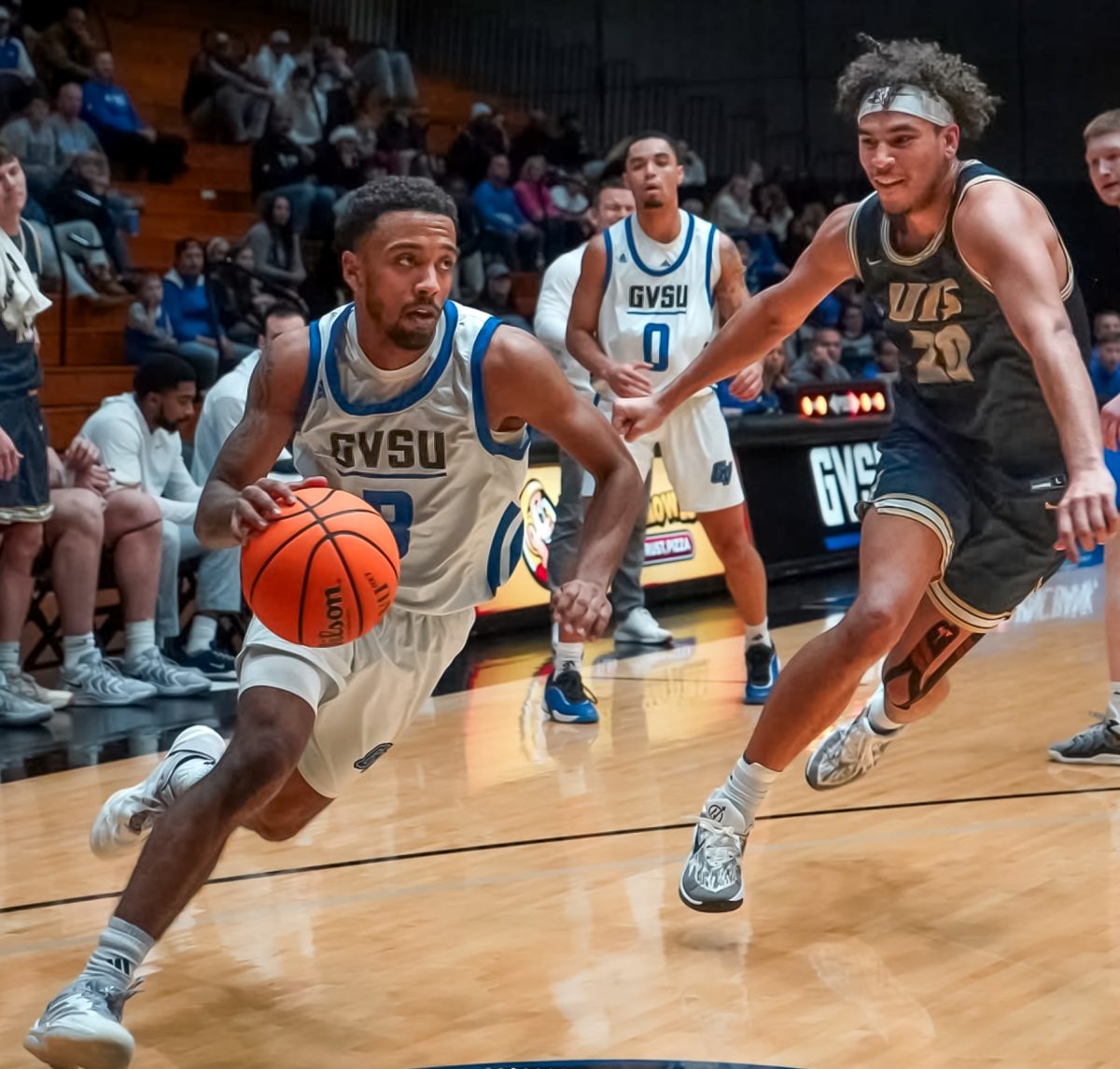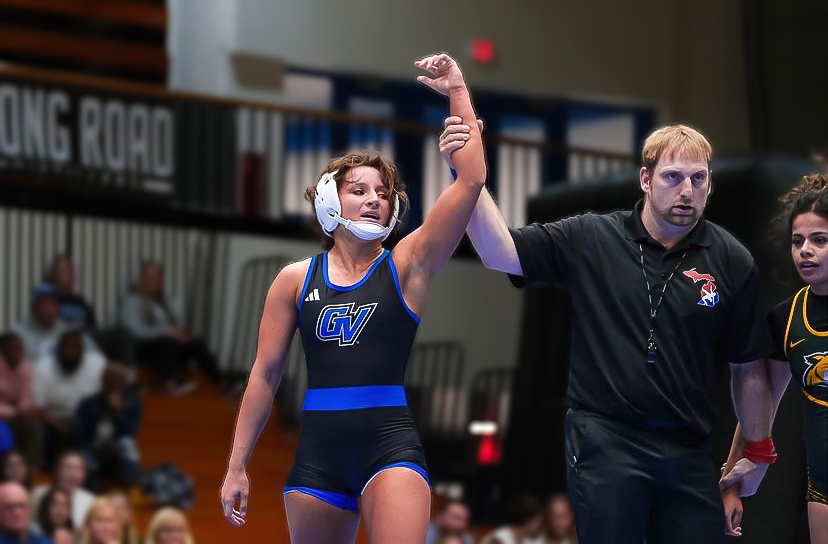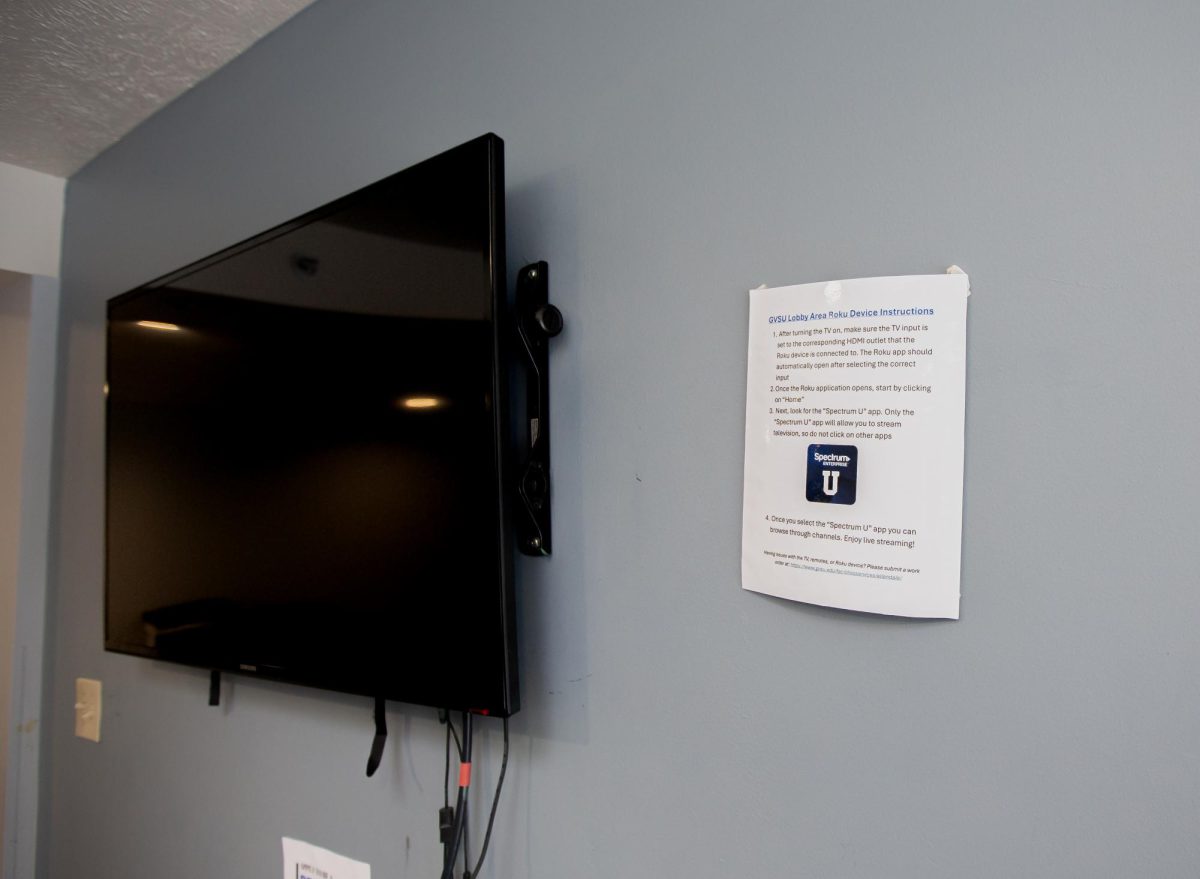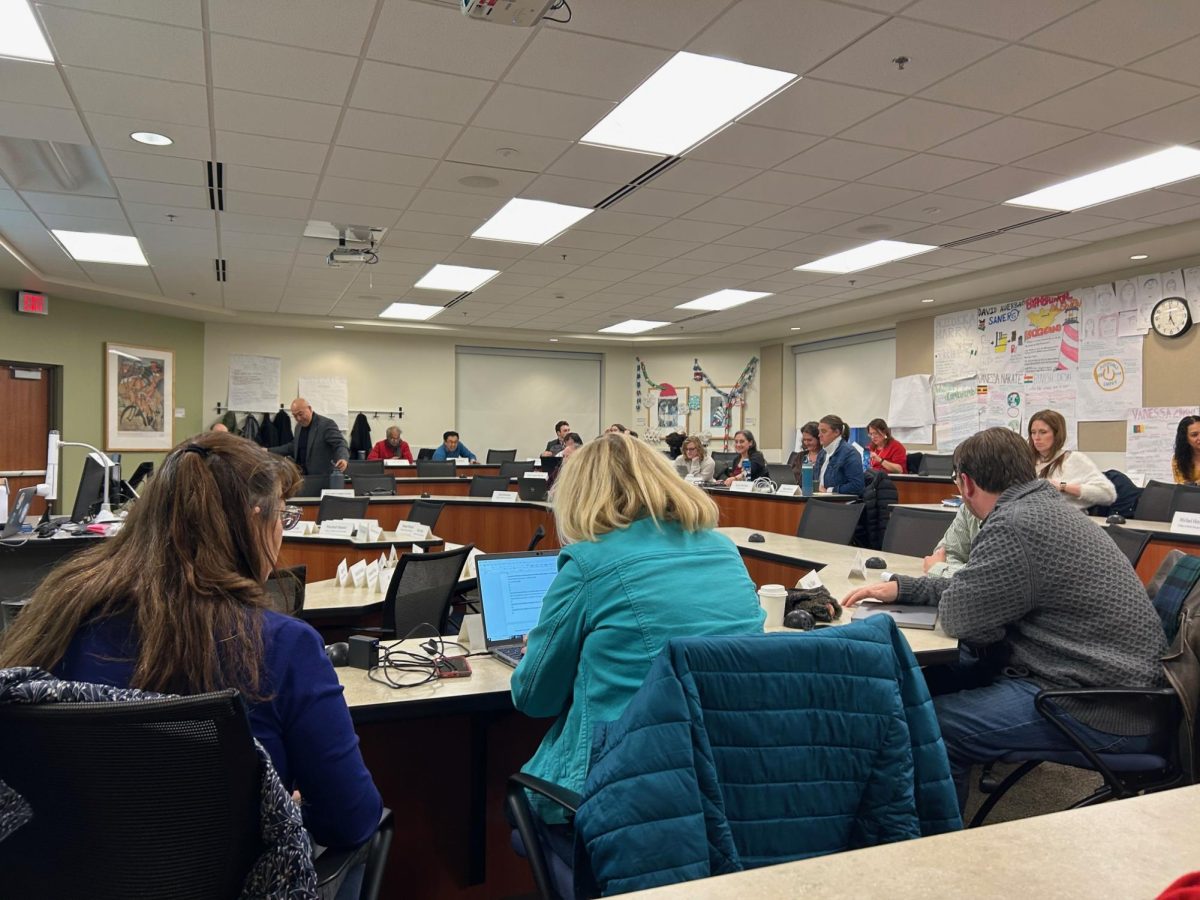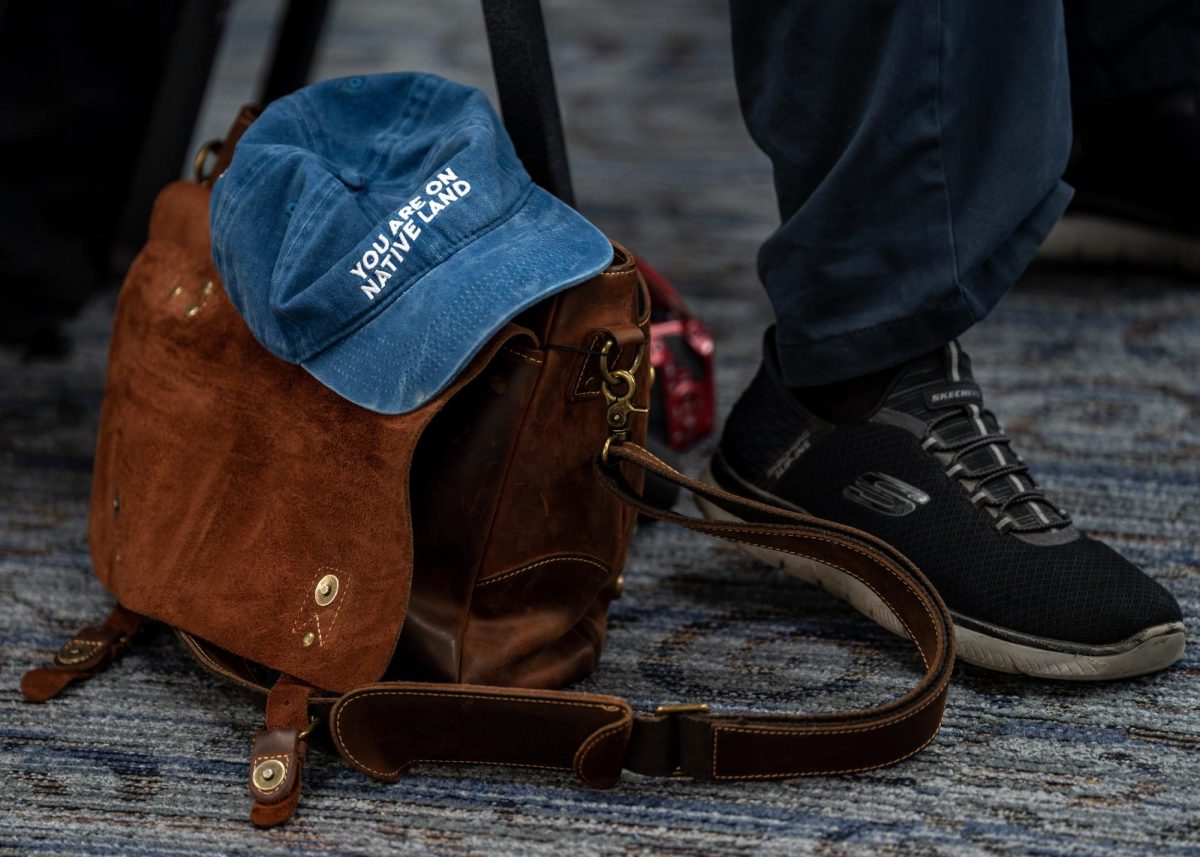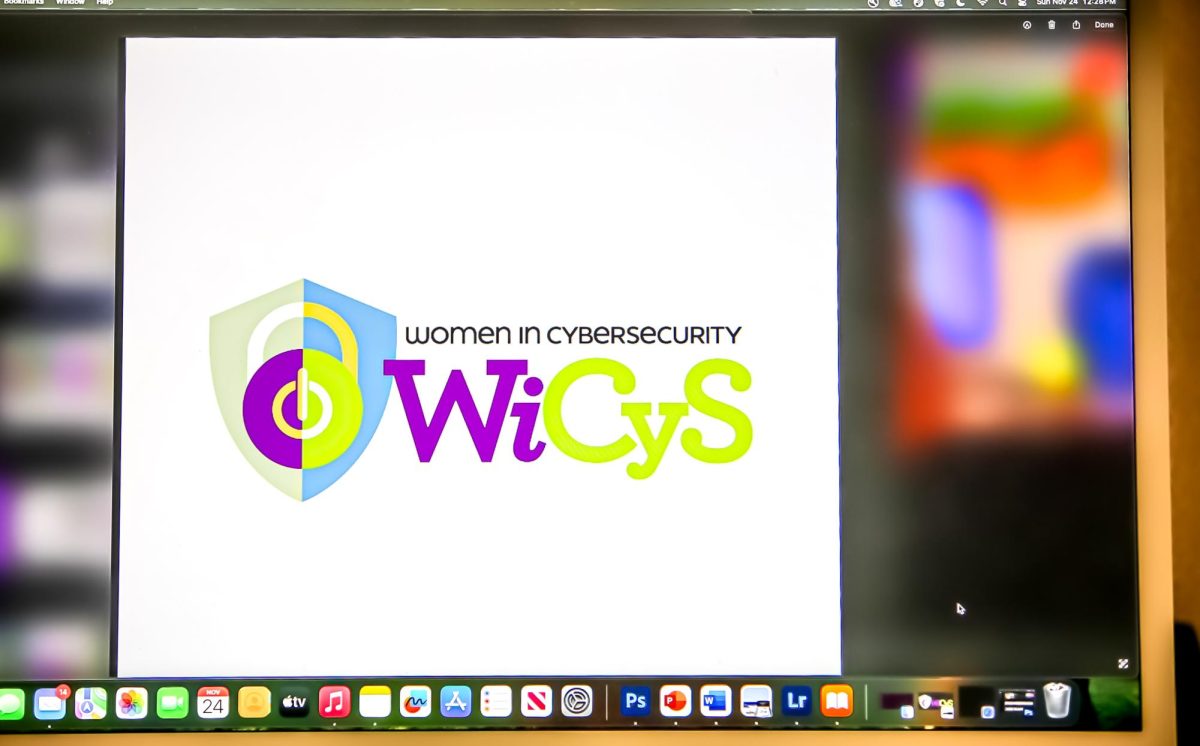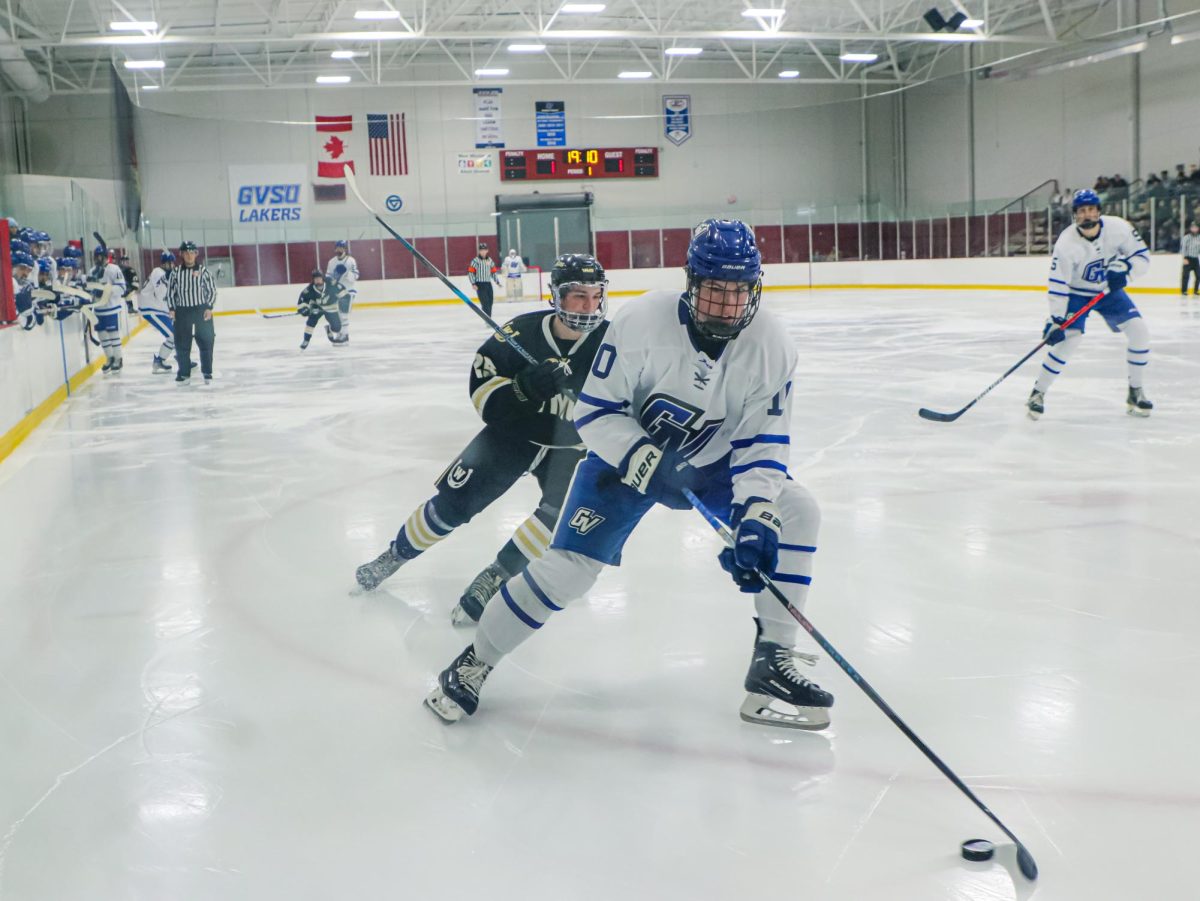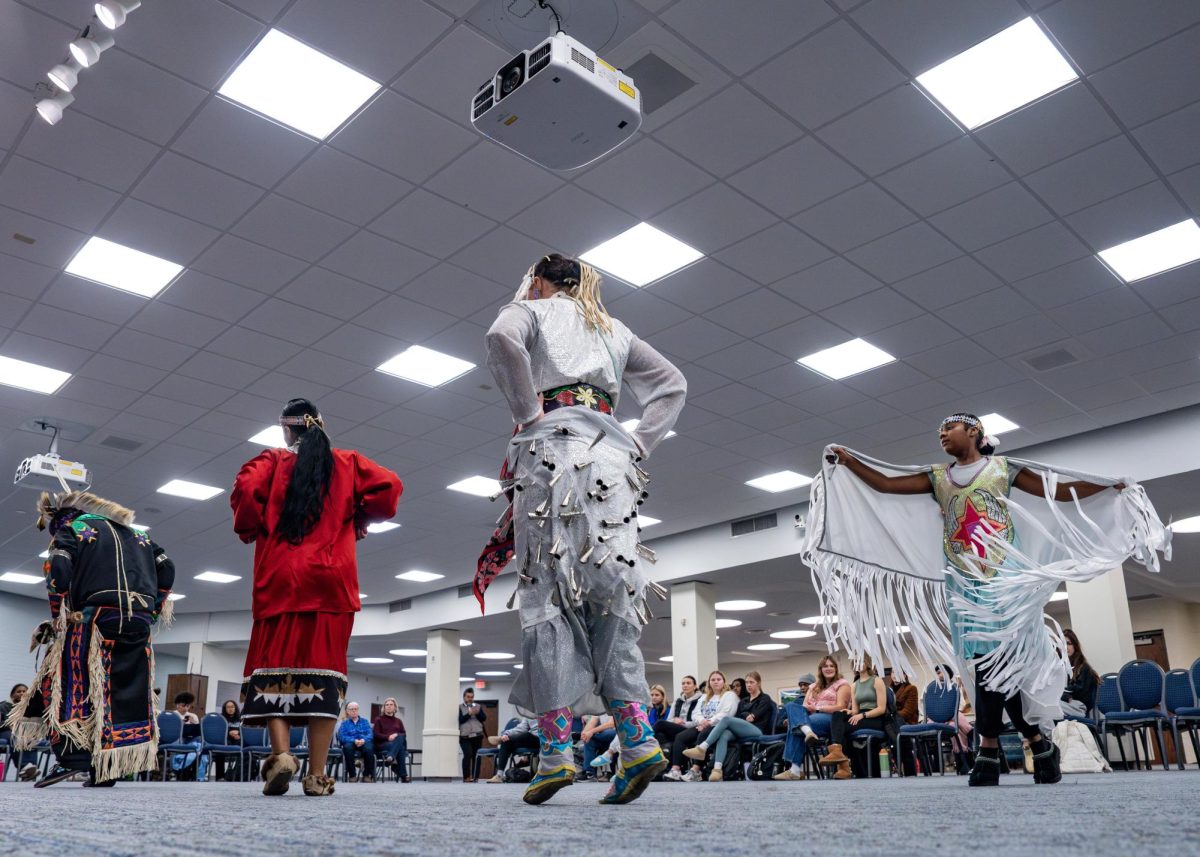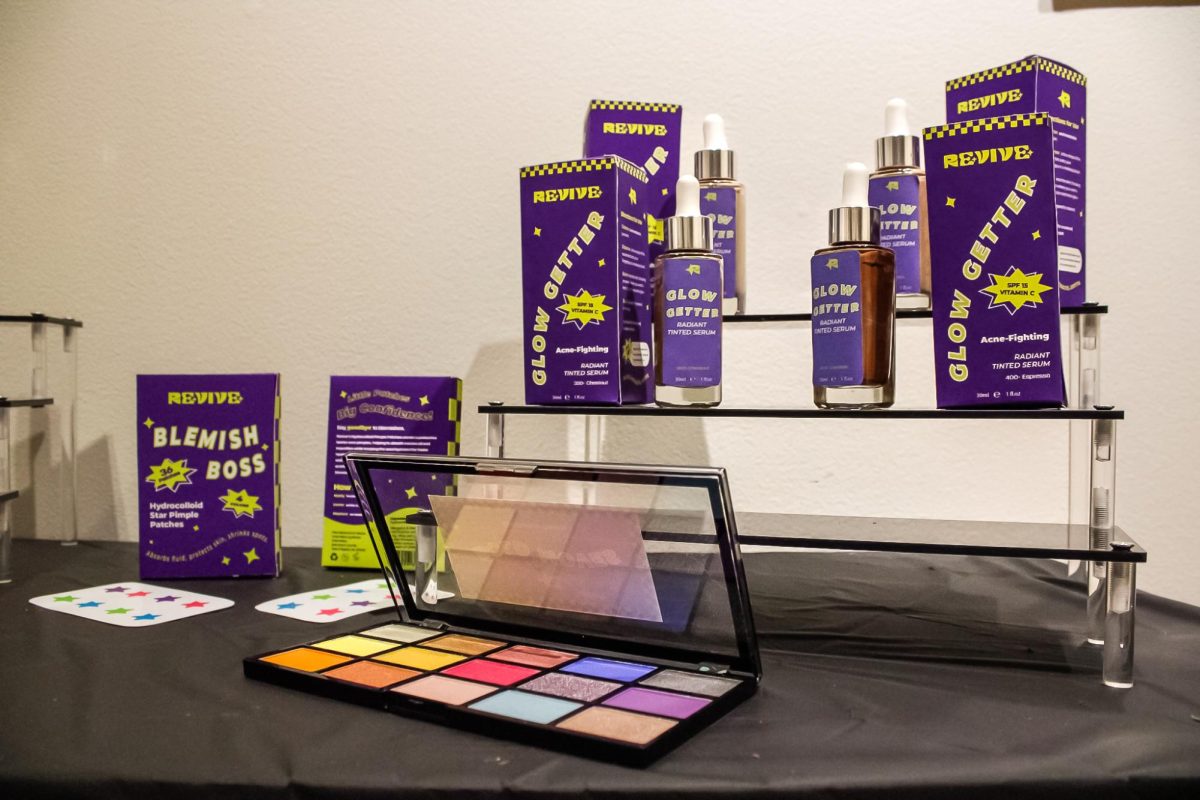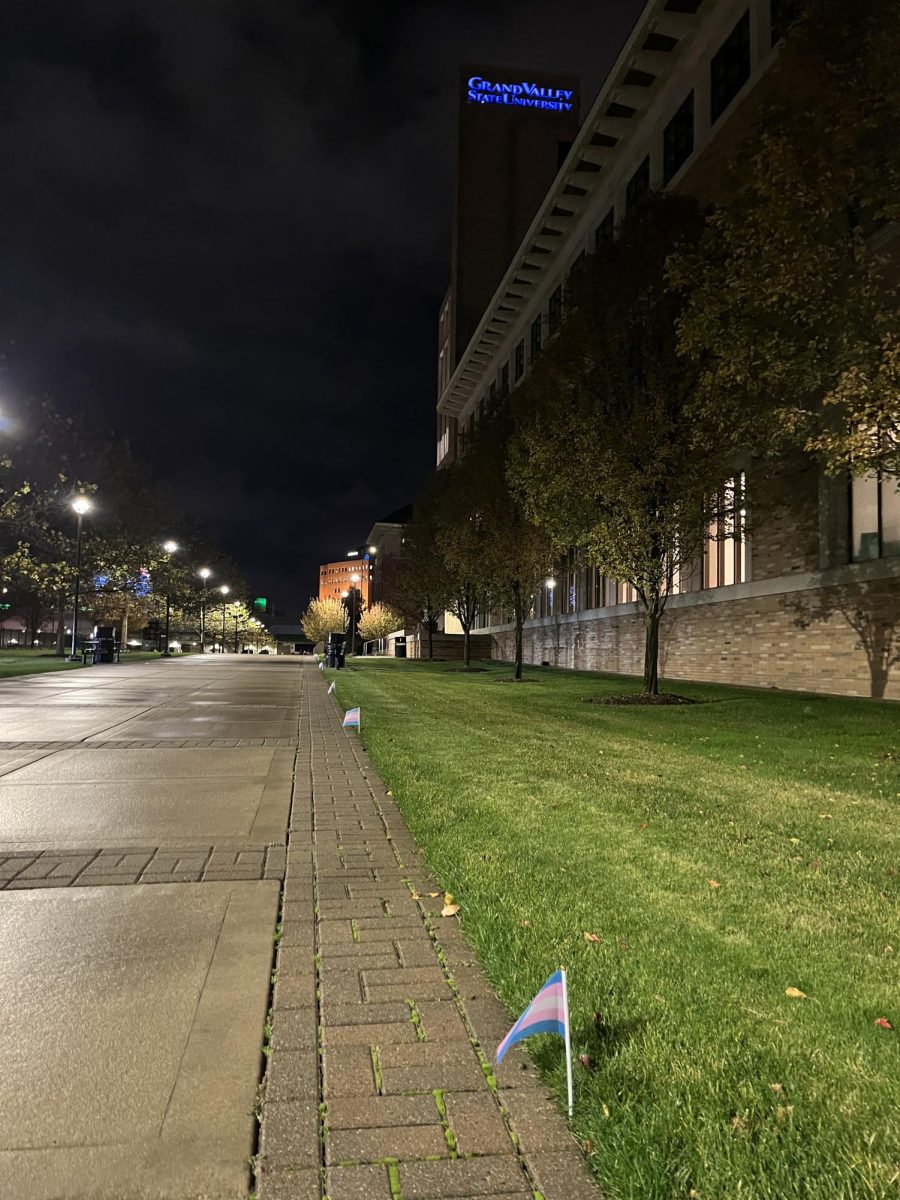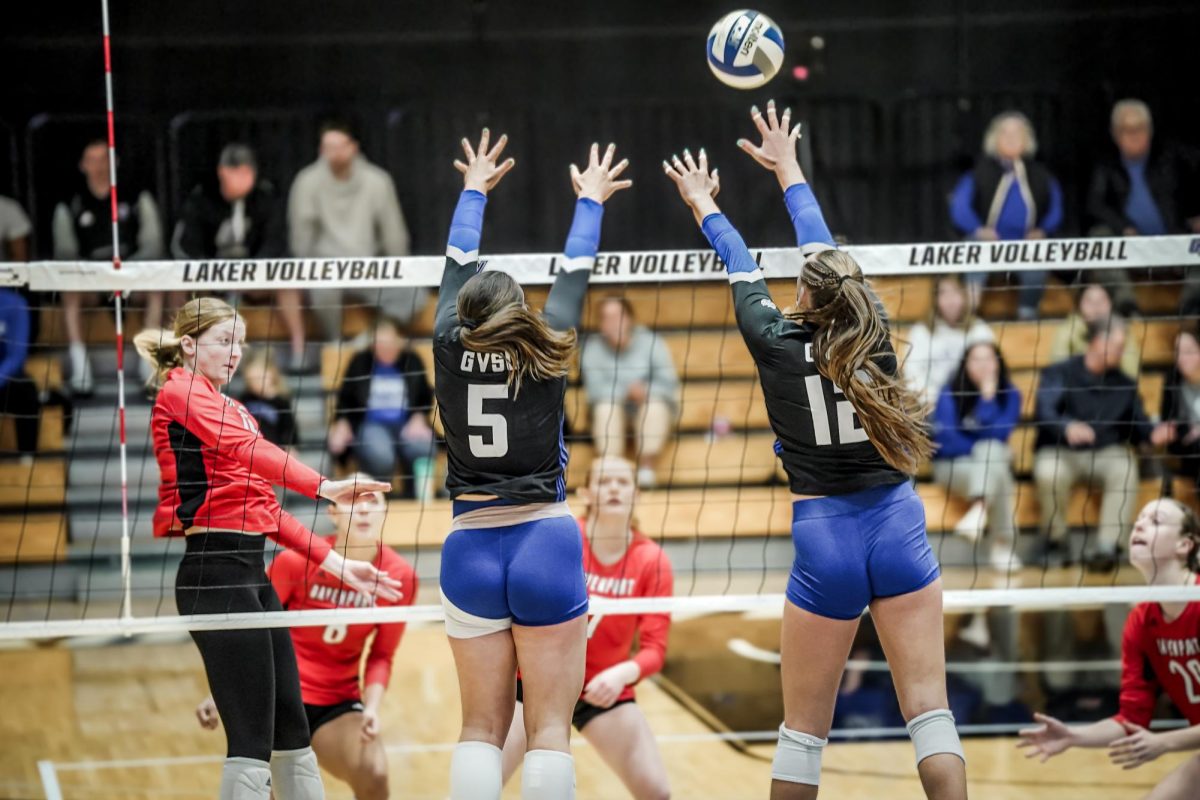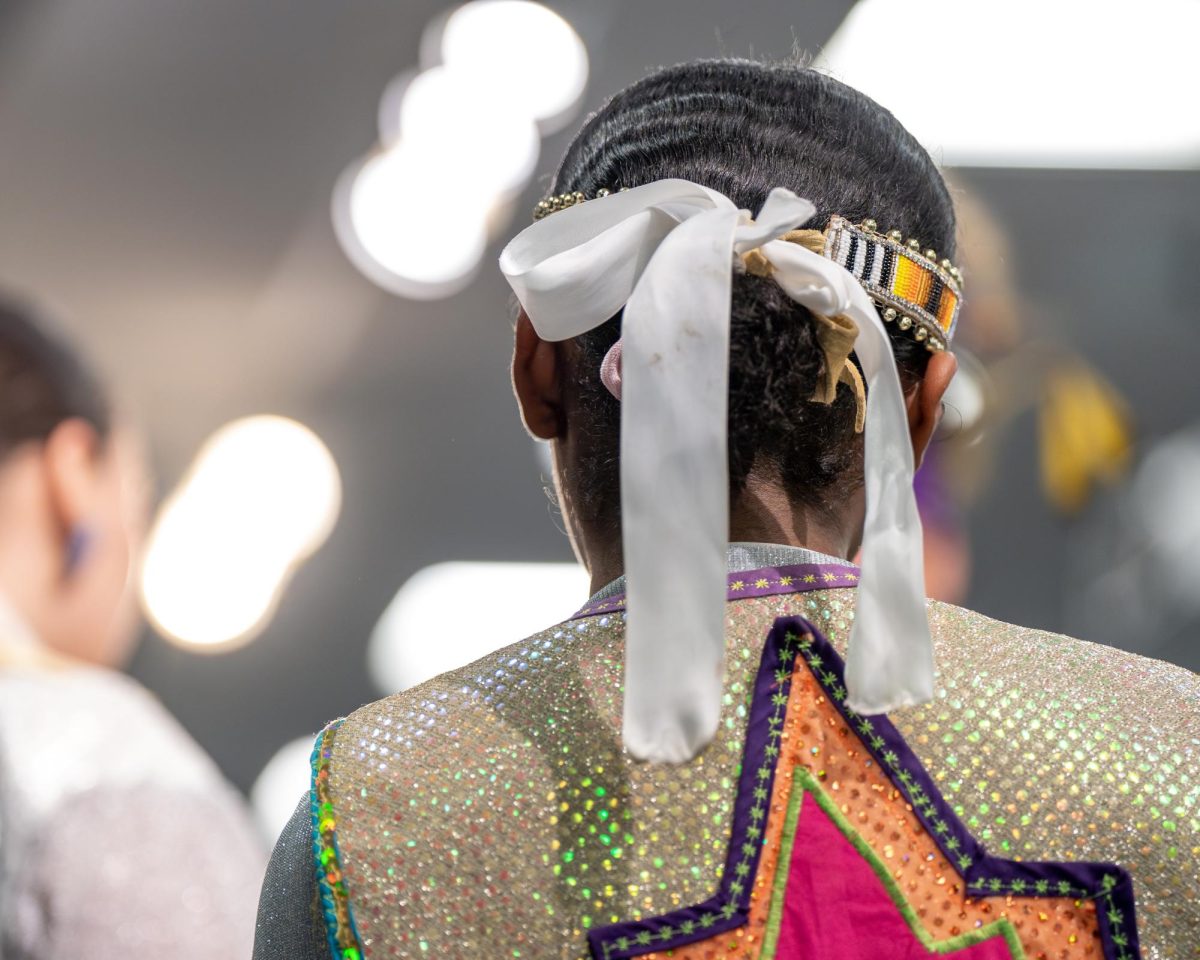Letter to the editor: Why Louie the Laker and ‘anchor up!’ do not represent toxic masculinity
Oct 23, 2017
Editor’s note: Marshal Brummel is a Grand Valley State University sophomore studying computer science. This column is in response to GVSU Professor Steve Tripp’s article, “Why I will never ‘anchor up!’ with Louie the Laker,” published online Thursday, Oct. 21. The opinions expressed in this piece are Brummel’s own.
On Thursday, Sept. 21, the Lanthorn published an article written by Professor Steve Tripp titled “Why I will never ‘anchor up!’ with Louie the Laker.” Due to the adverse response this article has created in my own friend groups, my essay disputes claims laid against facets of our Grand Valley State University culture. This essay will not focus on the opinions of Professor Tripp but will instead look at the logic and the arguments they brought to the table.
‘Anchor up’
Linguistics is a tricky subject and, when not substantiated by solid historical study, can often be used to dilute or change the context of words and phrases. Professor Tripp draws connection between the phrase “anchor up” and “man up.” Quoting the article, “What inspired the first iteration of (‘anchor up’) is not known, but I think it reasonable to conclude that it was a play on the popular phrase of visceral masculinity ‘man up!’” The issue with this statement is that it is not reasonable. Just one paragraph earlier Professor Tripp drew our attention to the nautical phrase “up anchor,” something said by seamen. As I read this article the first time, I was interested to read “up anchor” because I saw a connection with “anchor up,” just a simple reversal of words to make it easier to say in conversation or chant at a game, but became very confused when the connection was made to “man up.”
Phrases have a long history of being shortened or modified to make communication easier. To use one example from the vast selection, take “goodnight.” This statement was adapted from the phrase “have a good night” but was shortened in modern language. Seeing this, and other examples, and then to make a definitive connection between “man up” and “anchor up” is a stretch in my mind given how close “up anchor” and “anchor up” are.
So, what does “anchor up” mean to GVSU students? I cannot speak for everyone, obviously, but I had my own opinion of what it meant before this article. To me, “anchor up” meant that it was time to raise anchor and go. It would be comparable to saying, “Let’s go team,” in my eyes. I was curious about this, so I asked people in my classes along with anyone I passed in the hallway with a shirt marketing the phrase. The result? Some key phrases were, “Let’s go,” “Time to work,” “Stand your ground” and many other references to team/community. Not a single mention of “man up” or anything of the nature.
Men in Action
I skip ahead to the third-to-last paragraph where Professor Tripp says, “The university has an organization dedicated to furthering awareness about men and masculinities, ‘Men in Action,’ but its institutional support pales in comparison to that of other student organizations. Want evidence?” Then Professor Tripp asked if the reader has heard of them. The author used one data point to prove their argument. There was no comparison of fiscal resources, frequency of official communication to the student body, or faculty and staff attendance. They asked one person: the reader. This was not only a poor statistical analysis, but destroys the entire argument if the reader was familiar with Men in Action.
Louie and culture
It was unfortunate that someone who holds a position of authority in the university, not to mention the author of four books, would introduce the topic with a blatant over-exaggeration and a sadly immature comment regarding Louie’s face.
In the context of asking GVSU to do better in regard to being a center of intellectual growth, Professor Tripp wrote, “We ought to offer a conception of manhood—of humanity—that is as complex and as nuanced as the students we serve.” And we should. Yet, Professor Tripp places the concept of manhood in an extremely derogatory sense, using only one sentence to explain any good outcomes, and fails to give a “complex and nuanced” view of the situation. For instance, it was not long ago in the scope of history (approximately 1880s America) that young boys would wear dresses until the age of six or seven. Cultures flows in a cyclical model, in this case between gender exclusive and gender neutral, through time. To ignore the cyclical nature of culture is to fall into the same trap of using a single data point and focusing on the negatives of that point.
Louie, or any other mascot, will never be able to represent the complexity of entire cultures or ideas. This does not mean that we should not try to make our mascots representative, because adding a Louise the Laker is a good idea, but attacking Louie for representing a specific body of students does no good. Nothing about Louie “endorses a code of primal honor, misogyny, physicality, predatory sex and immediate gratification” that was referenced in association with “bro culture.” He does not exhibit these traits because those traits are personality traits, not physical observations. To assume that Louie represents poor masculine traits simply because he looks like “one fiercely determined, square-jawed, steroid-jacked, no-nonsense sort of a fellow” exemplifies an unfortunate habit of bias against people who look a certain way.
So is there more to modern manliness than “bro culture?” Of course there is. Professor Tripp even states, “Some of these traditional traits are indeed praise-worthy, such as being responsible and brave and following one’s convictions.” Additionally, terms associated with manliness might include dutiful, protective, hard-working, skillful and strong. I could not list all the things associated with being a man because it means so many different things to so many different people, so why limit it? If our fellow Lakers are happy being traditionally masculine, traditionally feminine or anywhere else on the spectrum, who are we to say, “No, stop doing that. We don’t like it,” as long as they are within the confines of the laws and university rules?
Conclusion
Professor Tripp, in essence, has created commentary on the GVSU culture. I agree that the atmosphere on this campus could use a change. I personally wish that my female friends could walk home from class or go for a jog at night and not feel afraid. But going after terms such as “anchor up” or Louie the Laker is not what is going to change the safety of the campus. What is going to change the safety is if we can all commit to respecting and protecting one another regardless of identity. Talking about the culture that we want as GVSU students is an extremely important step toward creating a culture that we want. I encourage everyone to read the article that this essay responds to and discuss the two pieces, as well as your own ideas, with your friends. Your attitude and actions matter and so do your friends. Starting small and keeping high standards is how we can break through so many social problems that we experience today. Culture starts with the single person, so why not start with you?




